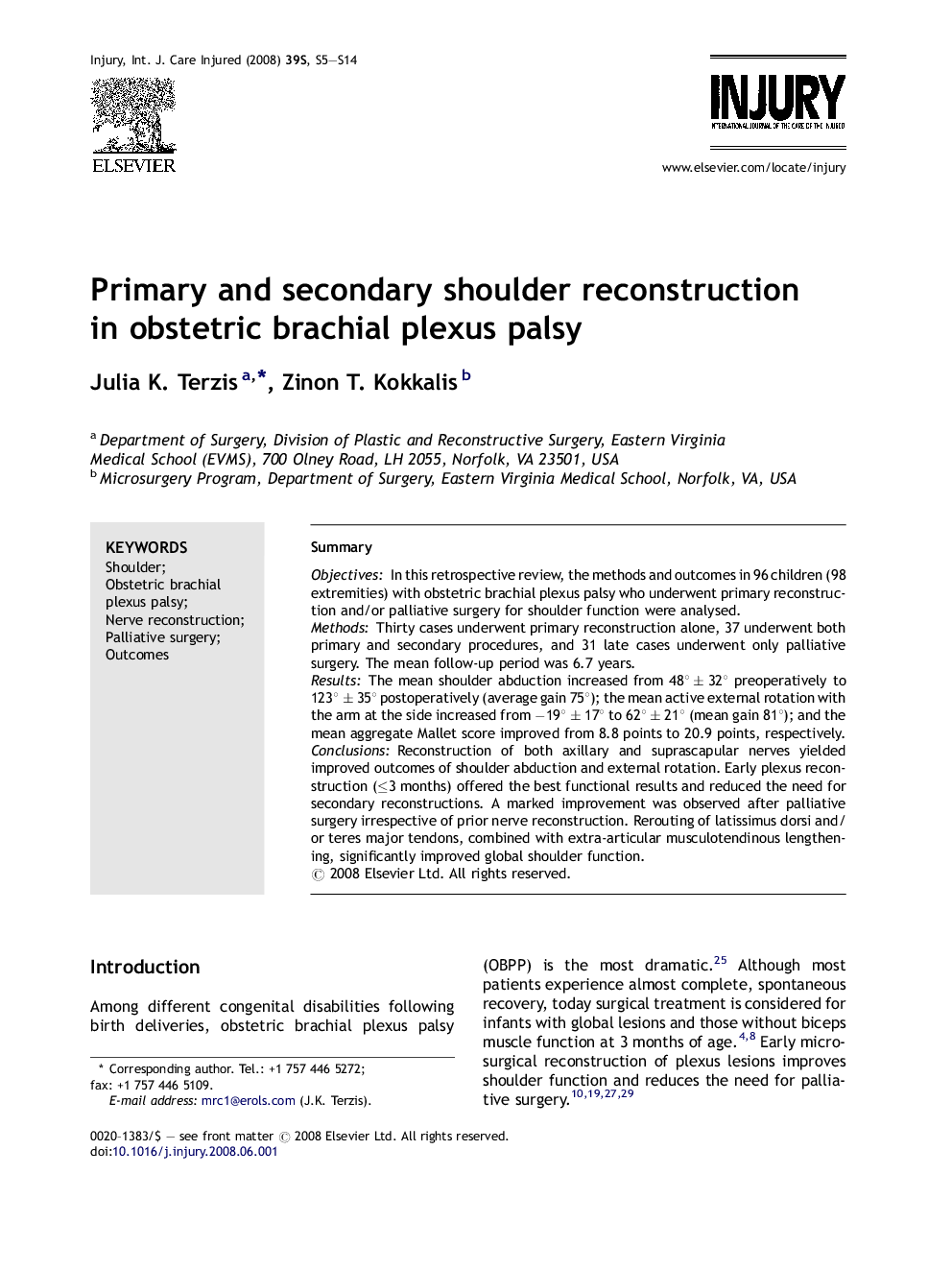| Article ID | Journal | Published Year | Pages | File Type |
|---|---|---|---|---|
| 3241843 | Injury | 2008 | 10 Pages |
SummaryObjectivesIn this retrospective review, the methods and outcomes in 96 children (98 extremities) with obstetric brachial plexus palsy who underwent primary reconstruction and/or palliative surgery for shoulder function were analysed.MethodsThirty cases underwent primary reconstruction alone, 37 underwent both primary and secondary procedures, and 31 late cases underwent only palliative surgery. The mean follow-up period was 6.7 years.ResultsThe mean shoulder abduction increased from 48° ± 32° preoperatively to 123° ± 35° postoperatively (average gain 75°); the mean active external rotation with the arm at the side increased from −19° ± 17° to 62° ± 21° (mean gain 81°); and the mean aggregate Mallet score improved from 8.8 points to 20.9 points, respectively.ConclusionsReconstruction of both axillary and suprascapular nerves yielded improved outcomes of shoulder abduction and external rotation. Early plexus reconstruction (≤3 months) offered the best functional results and reduced the need for secondary reconstructions. A marked improvement was observed after palliative surgery irrespective of prior nerve reconstruction. Rerouting of latissimus dorsi and/or teres major tendons, combined with extra-articular musculotendinous lengthening, significantly improved global shoulder function.
